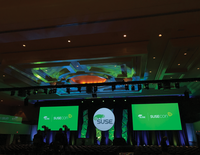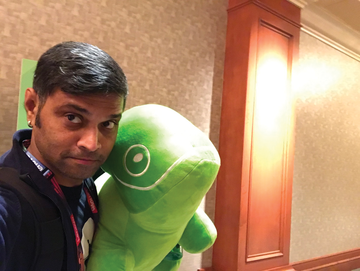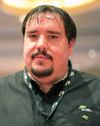
Images © Swapnil Bhartiya
SUSE Goes to Washington:
The view from SUSECon 2016
SUSECon 2016 took place in Washington, DC, in the same week as the US presidential election. An interesting piece of trivia: the openSUSE conference was held in the UK during the vote on Brexit, and they voted to leave. And then the US voted for Donald J. Trump. I told the SUSE executives that they should stop interfering with the political process of other countries.
DC is just 20 minutes from my home, so I attended all three days of the conference and also cast my vote. I was at the venue every morning at 8:00am because, unlike previous years, they didn't have one long keynote on the first day. They split the keynote discussions into smaller sessions spread across the three days.
At the Podium
The overall theme of SUSECon this year was "Define Your Future." SUSE is a big player in software-defined technology, whether it be compute, storage, or networking.
Michael Miller, president of Strategy, Alliances, and Marketing took over the stage and explained that, by splitting the keynotes into three smaller sessions, they could focus on one topic each day. The first day was "Time to Transform," the second day was "Adapt to Win," and the third day was "Down with Downtime."
Miller mentioned that the previous SUSECon included 120 sessions. This year's event had more than 150 technical sessions, which amounted to 900 hours of technical sessions and about 100 hours for hands-on training. The agenda
...Buy this article as PDF
(incl. VAT)
Buy ADMIN Magazine
Subscribe to our ADMIN Newsletters
Subscribe to our Linux Newsletters
Find Linux and Open Source Jobs
Most Popular
Support Our Work
ADMIN content is made possible with support from readers like you. Please consider contributing when you've found an article to be beneficial.






